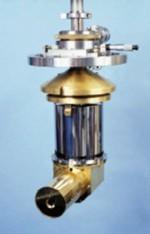Summary
In support of defense programs in remote sensing, NIST maintains the scale for infrared radiant flux by using an Absolute Cryogenic radiometer (ACR) in a low background environment. The program activities include developing methods and standards for calibrating sensors for missile defense or remote sensing in general as well as performing calibrations of cryogenic blackbodies and detectors for the user community.
Description

The Strategic Defense Initiative (SDI), and subsequently the Ballistic Missile Defense Organization (BMDO) and the Missile Defense Agency (MDA) of the U.S. Department of Defense (DoD), have motivated NIST's work developing calibration methods and standards for space-based sensors used in missile defense. These on-board sensors must detect and measure, on parity with the radiation from the Earth, faint signals from small targets viewed against the cold background of space. Because the flux levels at the detectors are so low, the sensors are often cooled to 77 K and below to achieve the required sensitivity. Thus, NIST supports the pre-launch calibration activities of the missile defense projects by calibrating their blackbodies and infrared test chambers at low temperatures using NIST standards. These calibrated blackbodies and test chambers are then used as transfer standards for the aerospace industry when performing pre-launch radiometric calibrations for DoD missile defense programs.
The calibration equipment and methods developed for measurements of blackbody sources used in missile defense test chambers have also enabled us to measure sources for civilian use, such as a Landsat ground test calibration source. The ACR-based radiant power detection system has also been used with a specially designed sample holder to measure the emissivity of materials at low temperature. An example is the measurement of low-emissivity metallic coatings intended for use as thermal shielding in the ITER fusion reactor experiment.
We have developed ACRs to serve as the primary standards for measuring optical power in a cold-space background environment. These instruments are trap detectors where the power incident on a receiver cone is measured by electrical power substitution. Due to the trapping nature of the ACR design, it has uniform sensitivity, close to unity, for all wavelengths of radiation from soft x-rays to microwaves. The first ACR was designed and built in 1989, having a noise floor of approximately 50 pW and a time constant of approximately 20 s. Since then, we have continued to improve our capabilities for power measurement. Currently, we are working on an ACR that can measure power (on the order of a picowatt, pW) with a noise floor at femtowatt (fW) levels, as well as faster ACRs for higher power levels using carbon nanotube absorbers to achieve millisecond time constants.

